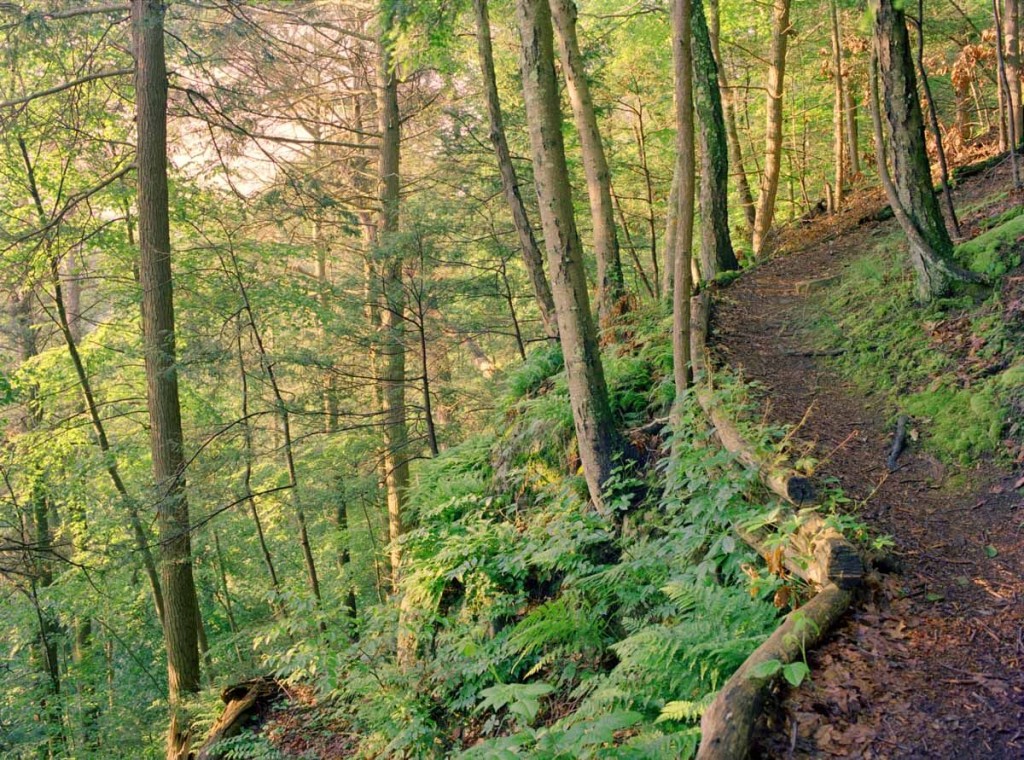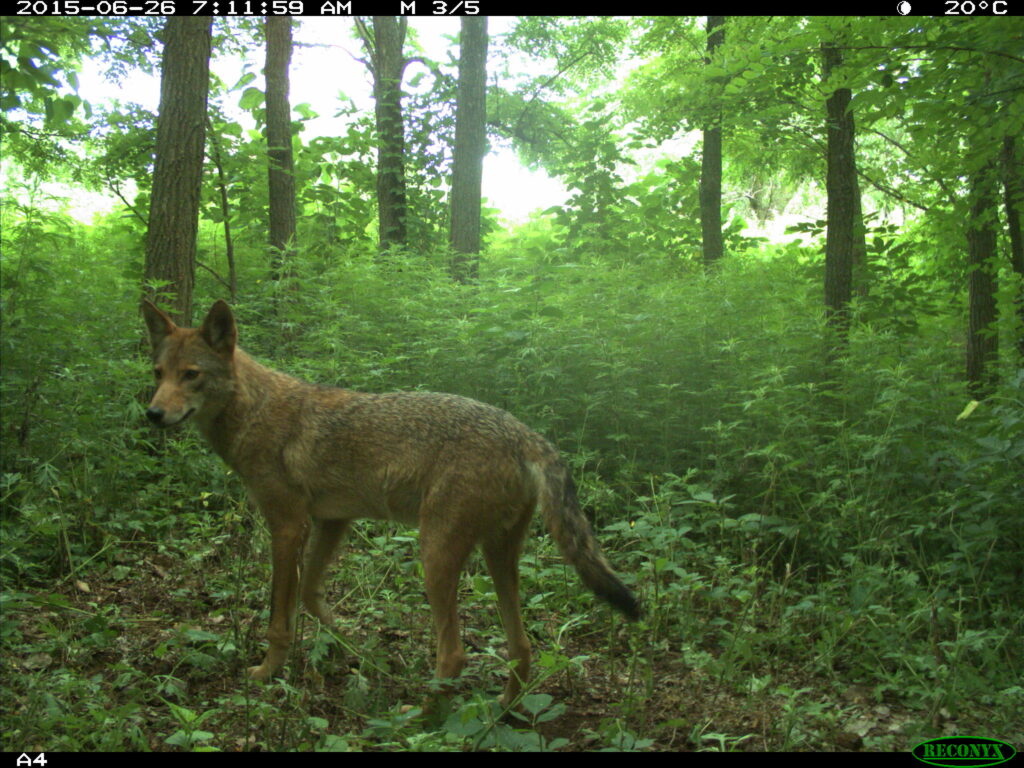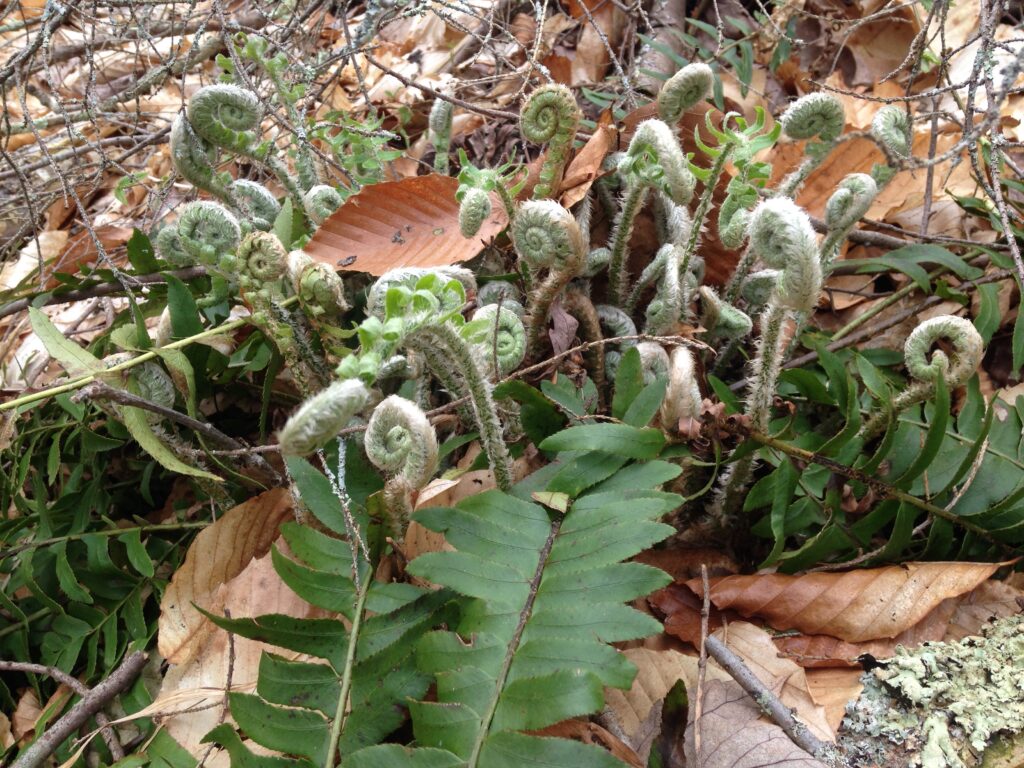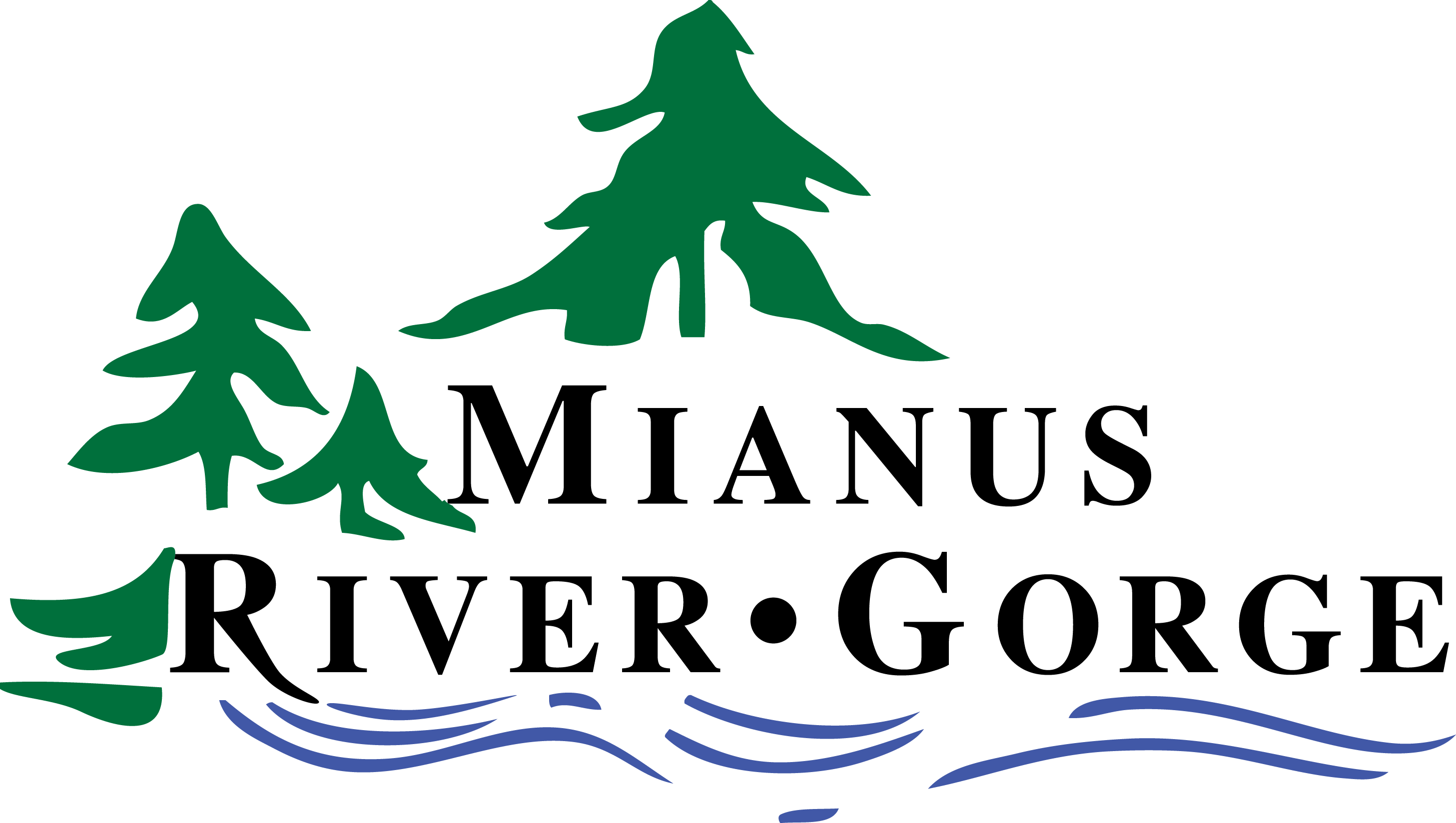
MRG’s primary mission is to protect, manage, and restore land and waterways within the Mianus River watershed. The organization’s mission also includes conducting scientific research to better understand and protect the plants, animals, and ecosystems that exist on our land and throughout the region at large. By necessity, protection, stewardship, and scientific research must sometimes exclude public access to MRG-managed lands.
The following guidance as to the trail system within MRG (design, purpose, usage) is based upon a review of the research literature and MRG’s management plan (which reflects the lands under management -both owned and through conservation easements- as of January 2022). A number of studies have examined the effects of trails and hiking in preserves on wildlife. Results vary, primarily on whether the effects of trails lead to behavioral or ecological effects. The effects of trails also vary widely across species and taxonomic group (e.g., birds vs. mammals vs. amphibians).

It is important to note that the studies that examined large-scale ecological effects found limited impacts. In other words, trails were not causing the total extirpation of a species from an entire preserve; every preserve, trails or not, will have species that are common in suburbia, e.g., coyotes, deer, raccoons, etc. But all mammals seem to change their behavior and activity patterns in response to even “low-impact” human activity.
Whether these acute behavioral impacts lead to chronic ecological impacts seems to be a function of whether the preserves in question are situated in more or less developed landscapes: animals living in preserves within suburban or urban landscapes suffered greater negative impacts from trails (Reed and Merenlender 2008) It is also noteworthy that the studies all found differing effects according to species. Some species (e.g., bears and bobcats) were more sensitive than others, while others tolerate and adapt to human activity relatively well. Coyotes, red fox, and white-tailed deer were often found to still use areas of high trail density (this activity was still largely nocturnal); however, many species are far more sensitive and MRG also strives to provide habitat for fisher, bobcat, and other reclusive wildlife.
Lastly, the study that found the most significant impacts (Reed and Merenlender 2008) compared hike-able preserves to private lands with no public access at all. A good guideline is that going from “no trails” to “some trails” is much more destructive than going from “some trails” to “more trails.” Thus if a trail system expansion is considered, MRG will strongly prefer growing our existing trails over building new trails in previously inaccessible parcels to protect “high quality” refuges.

Wildlife studies have found that trails can have an impact on wildlife up to 100 – 200 m away. MRG is currently performing a large study examining wildlife activity on-trail, 50 m away, and 200 m away with camera traps. Remote sections of MRG’s Preserve are of great conservation value and make us highly desirable as a research site as well.
The ability of an organization to maintain a high quality trail system is often inversely proportional to how large a system they have, simply because of limits on time and resources. Lynn and Brown (2003) found that the quality of hikers’ experience declined as trail quality declined, as measured by noticeable impacts such as trail erosion/muddiness, extension and widening of the trails, plant damage, litter, and signs of informal activity (fire rings, campsites, “hang-outs”, etc.).
Thus MRG is careful when expanding its trail system as it seems equally or even more important, from a community outreach and fostering support perspective, that we offer high-quality experience for our visitors.
Expansion of the trail system reduces the amount of stewardship we can do per unit of trail. Keeping up with aesthetic and ecological maintenance to provide high-quality trails may be more important to our mission and outreach goals than offering more trails.
Bibliography
Ballantyne, M and Pickering, CM. 2015.The impacts of trail infrastructure on vegetation and soils: Current literature and future directions. Journal of Environmental Eanagement 164: 53-64.
Bötsch Y, Tablado Z, Scherl D, Kéry M, Graf RF, and Jenni L. 2018. Effect of recreational trails on forest birds: human presence matters. Front. Ecol. Evol. 6:175. doi: 10.3389/fevo.2018.00175
Kays R, Parsons AW, Baker MC, Kalies EL, Forrester T, Costello R, Rota CT, Millspaugh JJ and McShea WJ. 2017. Does hunting or hiking affect wildlife communities in protected areas?. J Appl Ecol, 54: 242-252. https://doi.org/10.1111/1365-2664.12700
Liedtke R, Barros A, Essl F, et al. 2020. Hiking trails as conduits for the spread of non-native species in mountain areas. Biol Invasions 22, 1121–1134 https://doi.org/10.1007/s10530-019-02165-9
Reed SE and Merenlender A.M. 2008. Quiet, nonconsumptive recreation reduces protected area effectiveness. Conservation Letters, 1, 146–154.
Taylor AR and Knight RL. 2003. Wildlife responses to recreation and associated visitor perceptions. Ecological Applications, 13: 951-963. https://doi.org/10.1890/1051-0761(2003)13[951:WRTRAA]2.0.CO;2
Appendix B – Full recommendations from meta-analysis by Ballantyne and Pickering (2015)
- Avoid creating trails in particularly sensitive ecosystems/sites and in ecosystems of high conservation value. This includes avoiding soft humus-rich or Aeolian soils, ecosystems containing many disturbance-susceptible species (e.g. interior forest birds and slow-growing, non-clonal plants), sites slow to recover from disturbance (e.g. alpine) and sites close to known threatened species and communities.
- Avoid building trails perpendicular to contours, i.e. up and down slopes, especially in sites with high precipitation, high use and/or with loose or deep, friable soils. Instead try to ensure that trails have steady descents and ascents that run parallel to contours such as side trails.
- Design trail networks so they minimize cumulative spatial impacts including from fragmentation. This includes reducing trail widths to a narrow, but practicable tread, limiting trail networks to the minimum acceptable number of trail segments and actively managing the creation of informal trails.
- Avoid direct local impacts from use on the trail surface when there is a risk of erosion by hardening the surface and use, where possible, use local materials as the substrate.
- If sites are relatively level, soils are not easily eroded and use is moderate, consider leaving trails unsurfaced and maintain trail width and braiding by using berms, rocks and pass points and maintain drainage using boulders.
- If hardening is necessary and local materials not available or appropriate, consider raising the infrastructure. Raised metal walkways, for example, constructed of cut-corrugated galvanized steel mesh are weather-resistant, long-lasting and have a perforated surface allowing light and water to penetrate to the vegetation below. Raised infrastructures often have fewer impacts than ground-level trails, but are generally more costly.
- If hard-surfacing such as tarmac or gravel is required, then actively rehabilitate vegetation on the edge of the trails post-construction. This will reduce secondary succession along trail verges by invasive or ruderal species, quickly build up a complex vegetation structure and allow the recovery of soil structure and composition.
- Obtain visitor data including using qualitative and quantitative sociological research and use this information when designing trails so they match visitor demand and motivation with visitor experience and therefore reduce the potential for the creation of informal trails by users.
- Provide information about appropriate trail use to visitors. This could be as simple as providing signage or stakeholder workshops, or using more technical methods such as free, publicly available apps to allow people to access maps and learn about the environment they are using.
- Relocate activities that promote informal or off-trail use to areas of lower conservation value such as plantation forest and/or heavily altered ecosystems such as farmland or city parks.
- Increased applied research on how human use can damage natural areas in general.
